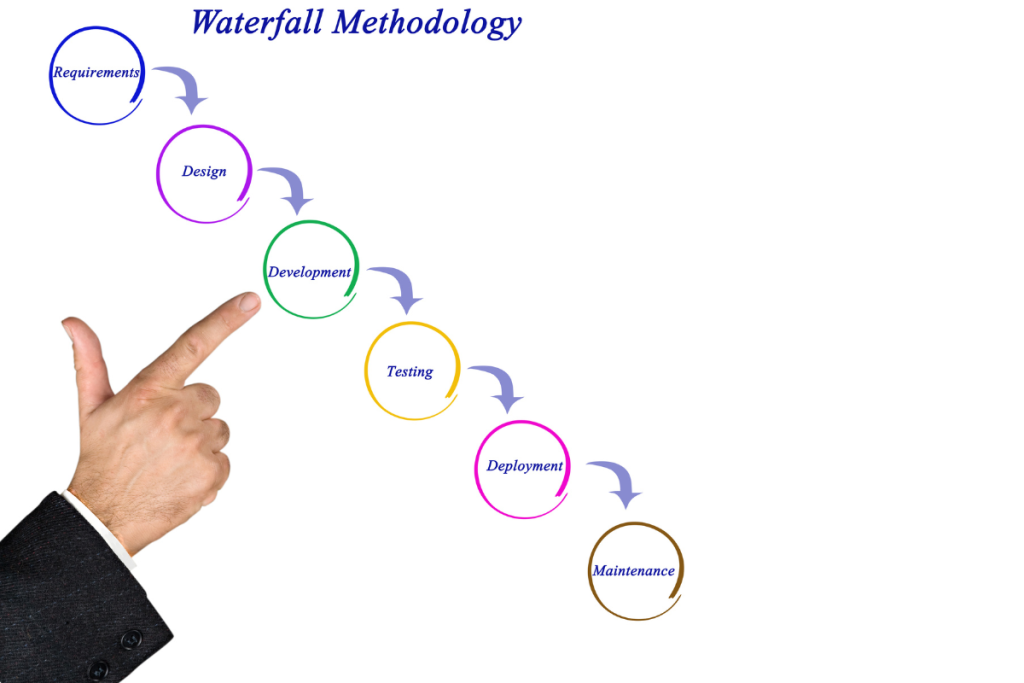A Business model is how an organisation will generate revenue, it’s service offering s, key activities, funding avenues, the resources required and customer breakdown.
There are many questions you’ll have to find the answer for when starting up your business. What is your company aiming to provide? How will you go about achieving your goals? To perform well and hit targets, a business model is essential.
Deciding on a strategy which will provide customers with the solution to their needs pales in comparison to the importance of your business model. Financial gain and careful management of capital are also key, aided most noticeably by your business model.
What Exactly Is A Business Model?
Your company’s business model is its modus operandi, or the way in which it operates. The business model lays out your methodology and explains the balance of costs and benefits for customers. The model will outline any products and services your company provides, data analytics on your audience and customers, and of course, projected costs.
Desirability
The first pillar is how desirable your company’s aims are. You must consider the demographics who use your service, what that service provides for them, a balance between how much you can charge and what you can deliver, and how you can retain clientele.
This is a hard balance to strike; failure to carefully measure customers’ needs and personal finances while still retaining a quality service for a fee will no doubt see market losses.
Feasibility
Another huge question is simply whether the business will work. In the startup stages, this is a question you will have to ask yourself constantly as you develop your company and business model. Is there a clear path to success with meaningful goals, and are those goals actually achievable? Will you require the help of business partners or investors?
Viability
Business is commerce, and that means if there’s no pathway to actually making money and providing a worthwhile product or service, then the business is dead on arrival. Figuring out whether your business is actually profitable is the final key step to starting to put together a successful business plan. Utilise financial projections and possibly enlist the help of a market research expert to gain the best possible insight into viability.
Once you’ve developed a business model, you should be able to answer questions such as:
- Why will different types of customers flock to us?
- How will we reach them?
- What type of relationship are we going to establish with them?
- How are we going to serve them?
- What are they interested in?
- How can we assist them in improving their lives?
- How much will they pay us?
- How frequently will they pay us?
- Do we have everything we need?
- Who will assist us?
Ask yourself these questions regularly; upscale potential is a huge draw for stakeholders and these strategies will ensure your business doesn’t lose its market edge.
What Are The Essential Elements Of A Business Model?
There are three main sections to consider for a business model; Production, marketing and payments.
Production deals with anything required to product the thing that you will sell. This could be design, raw materials, labour, IP, etc. Anything needed to sell what you’re selling comes under marketing. This includes marketing itself, delivery of services and how sales are processed. Finally, the payments side of things covers how you will physically get paid and when.
Also see our article business nature meaning.
The business model is fundamentally a plan outlining the interplay between the cost of producing your product and any additional costs, with the fees you will actually charge customers.
The overall desirability, feasibility and viability of your business hinges on the markets and audience, how much financial value your company stands to gain, and your projected sales, all while considering market rates and changeable customer sensibilities.
What Is The Purpose Of A Business Model?
A business model will act as the backbone to your company’s operations and overall mentality. It looks at your business strategy’s feasibility down the line and considers company resources, revenue, sales strategies and clientele.
There are other advantages to developing a company model, such as:
The Target Market Is Clearer
One purpose of the business model is to outline how much market need there is for your company and its services: this is a value proposition. This determines the consumer issues that your company is attempting to solve, and how it will do so.
This allows you to break down the target audience into manageable demographics and concentrate on the customers who will truly benefit from your service.
Preparing A Strategy Becomes Easier
There are many different types of business model, and the one you choose will largely depend on the above mentioned target audiences. Some focus on closer links with manufacturers of physical products at the expense of customer relations, while others provide the opposite.
Making Your Model Official
It can be easy to assume that you know the aims of your company, but without closer scrutiny it can be impossible to project if that strategy will actually be feasible. Often based on outdated data or personal biases, there’s no point committing to a flawed strategy if it will only mean disaster down the line.
A business model can actually alleviate this; by clearly stating your assumptions and evidence, it allows for assessment and a rework if necessary.
How Can You Tell If Your Business Idea Will Be A Success?
Profitability is key. Your company’s overall financial yield must be higher compared to expenses to provide a positive net gain.
Cutting edge business models are required to keep the three factors of feasibility, viability and desirability balanced and thriving, but you can play these against each other and make cuts or injections to each where necessary, further boosting any aspect of your business which might be faltering. Original ad campaigns or unique sales strategies are one answer.
Don’t get caught up trying to revolutionise the industry at this stage. The tried and true methods are used by thousands of companies worldwide for a reason: they work. Partner with one of these companies or follow in their footsteps, but remain unique.
Take the hospitality industry. These ventures, such as restaurants and retail stores, all follow a well established business model, but what it looks like in practice will vary with each.
Overall, the business model seeks to plainly demonstrate how the business functions. Measuring three key stages (what your company makes, how it sells that product, and the means by which customers pay for it) it encompasses your complete strategy from production to purchase.
If your company is just finding its feed, these seven business models could be the foundation.
BUSINESS MODEL 1: THE MANUFACTURER
Physically producing the hardware or material goods is the goal of the manufacturer, utilising raw materials (anything from wood and metal to plastics) to fabricate physical goods. This being the first stage of any production strategy, this business model relies on selling these products directly to customers or through a subsidiary.
2ND BUSINESS MODEL: BRICKS AND CLICKS
With huge corporations like LEGO or Waitrose, brick and mortar stores combined with online e-commerce sites are a cornerstone of most retail today, and the methodology of this business model. Products are sold physically in stores or distributed through a website or other online retail platform (this could be an app, for instance), expanding your customer base tenfold.
3RD BUSINESS MODEL: ADVERTISING
Content creation is key to this business model, utilising podcasts, YouTube videos, lifestyle blogs and more to promote your company’s service. Your business makes money when advertisers pay to utilise your platform themselves, building off your content and growing traffic.
This business model walks a thin line of insufficient capital injection to produce worthwhile marketing campaigns, and bombarding potential customers with too many targeted ads which turn them off your business. If these ads are on your social media outlets, it’s essential that either that third party service or your own platform offer a premium service to render them free of ads.
4TH BUSINESS MODEL: MARKETPLACE
Companies like eBay and AirBnB offer a platform where buyers and sellers operate independently, paying fees on each transaction or listing to the owner of the platform. That’s where your business comes in, providing a niche service in the market and acting as the go-between, while customers provide one another with the goods and service.
5TH BUSINESS MODEL: SUBSCRIPTION
The rise of streaming giants like Netflix and Disney+ has seen companies utilising other business models adapt their strategies to include online, fee-paid streaming (such as Amazon developing Amazon Prime). Monthly or annual fees can provide customers with the right payment plan for them, and your business with the regular income necessary.
6TH BUSINESS MODEL: DIRECT SALES
This is the most common business model which springs to mind when considering commerce; literally selling a product to customers who pay for it. But an adaptable mindset while injecting fresh ideas like collaborations with artists or content creators can boost marketing and sales exponentially.
7TH BUSINESS MODEL: ON-DEMAND
Though this model only provides a service when customers require it (hence the name), such as Uber’s platform for transport services, finding a market niche where the need arrives often and consistently is key to success with the on-demand business model. People will always need to get from one place to another, so Uber sees constant use. This model also fits a freelance schedule, and often integrates technologies at the forefront of industry.
Innovate Using Existing Business Models
This is not an exhaustive list. If your company focuses on an entirely unique set of products or services, perhaps a pairing of two business models or one which derives aspects from multiple strategies will be key to success. The one constant is innovation. By avoiding the risk of financial stagnation, your company can grow on the foundation your chosen business model provides, be that established or evolutionary.
Remember that building a business model from the ground up is a double-edged sword, creating as much opportunity as it does a whole new set of challenges based on assumptions and uncharted markets.
Finding A Profitable Business Model
Most companies, however, will likely fit into at least one of these models, even if there’s crossover. In fact, the service itself that your business provides may determine the business model it follows from the beginning.
If your company produces physical goods like furniture or electronics, then it’s a sure bet it will follow the manufacturer business model. If there are various complexities, like how you distribute those goods, for instance, then a business model is even more crucial for covering all bases in your strategy.
The business model will underpin the basic operations of your business. Build on it and expand as your target audience adapts, market rates change, or key needs are identified. A strong guiding model will set you on this path to success, alleviating the upfront risks of forging a career as an entrepreneur.
Conclusion
In summary, a business model dictates the key aspects and strategies of your company’s day to day operations and projects this on a wider scale. It breaks down all elements like production costs and initial fees, to processing customer information and payments then providing those customers with a worthy service. By evaluating the markets and your company’s guiding principles, the business model is the route to expansion and success.






















































































































































